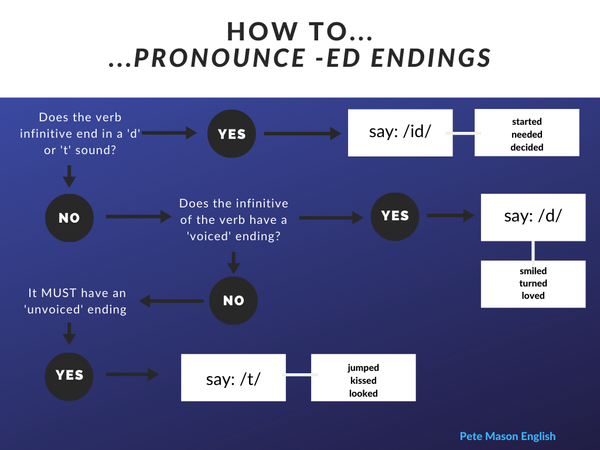How to.....pronounce -ed endings in verbs.

You wanted me to look at a few tricky areas of pronunciation. I really understand the problem! Why is it written one way and said in a completely different way? This can cause real issues when you want to speak more fluently and feel confident that you are saying something correctly.
The good news is that, in some cases, there are some simple rules to follow (of course there are always exceptions). I've put together the infographic above to help you decide how to pronounce -ed endings. I'm dealing with verbs here as other -ed ending words, such as adjectives, may follow different patterns.
Using the flow-chart.
When we look at regular verbs ending in -ed (the past simple form) this is a straight-forward process.
Example
How do I say "finished"? (the infinitive of finished is finish). Using the word "finish" I follow the flow chart:
- Does "finish" end in a 'd' or 't' sound?
- No.
- Is it 'voiced' or 'unvoiced'?
- It's unvoiced.
- Then I should use /t/ at the end of the word 'finished'.
I've included some examples in the flow chart to help.
Once you're happy with using this, I recommend making three groups of -ed ending words in your vocabulary book: those that you say /Id/, /d/ and /t/ with.
How do you tell is something is 'voiced' or 'unvoiced'?
You can tell if an ending is 'voiced' or 'unvoiced' quite simply by putting your hand on your throat when you say the word: feel a strong vibration? It's voiced. Don't feel any, or it's very weak: then it's 'unvoiced'
6. Juli 2020





